|
|
|

It is difficult to take good pictures of this plant because the
petals are translucent and some colours are not captured well by digital
cameras.
|
|
 |
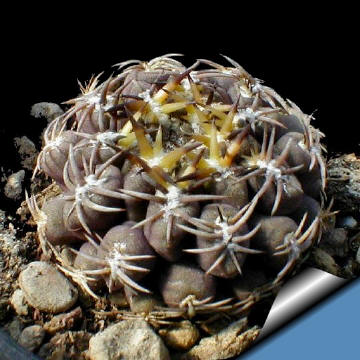 |
|
. |
|
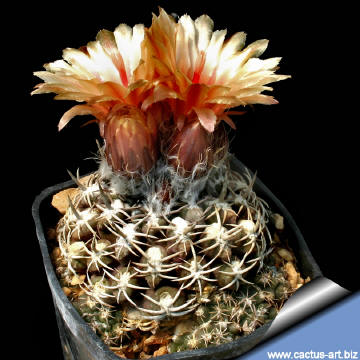 |
 |
|
. |
|
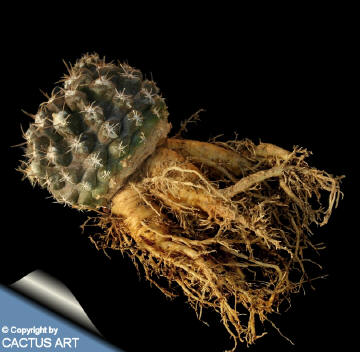 |
 |
|
. |
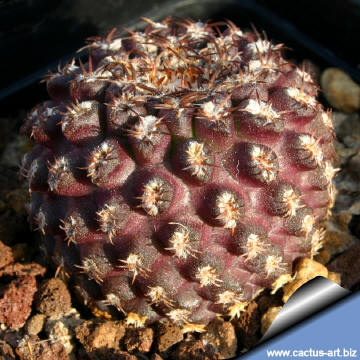 |
 |
|
Photo of conspecific taxa, varieties,
forms and cultivars of E. napina.
(This
Taxon has lots of synonyms,
with several controversial varieties and
subspecies, and comprises a multitude of
different forms)
Advertising
|
|
|
|
|
Family:
Cactaceae (Cactus
Family)
Scientific name:
Eriosyce aerocarpa
(F.Ritter) F.Kattermann 1994
Origin: Chile, Atacama, Huasco (Around Carrizal Bajo at west of
Canto del Agua )
Habitat:
Grows in some extremely arid areas in the Atacama desert, in superficial soils covered with
quartz, and then the sand sustain the roots or in rocky quebradas deep
seated in rock crevices. They cohabit with Eriosyce napina ssp.
Challensis
Conservation status: Listed in
CITES appendix 2.
Synonyms:
- Neochilenia aerocarpa
(F.Ritter) Backeb. 1959
- Chileorebutia aerocarpa
F.Ritter (Nom inval.) 1960
- Thelocephala aerocarpa
(F.Ritter) F.Ritter (Nom. inval.) 1980
- Neoporteria aerocarpa
(F. Ritter) Ferryman 1991
- Neoporteria reichei v.
aerocarpa (F. Ritter) J.D. Donald & G.D. Rowley, R. & K.
Preston-Mafham
In:
Cacti: illus. dict.: 147: 1991
- Neoporteria reichei f.
aerocarpa
- Neoporteria napina v.
aerocarpa (F. Ritter) A.E. Hoffmann J.
In: Cactaceas en la flora silvestre de Chile: 226:
1989 arpa (F. Ritter) Don. & Rowley
- Eriosyce napina ssp.
aerocarpa Ferriman
Heterotypic synonyms:
- Thelocephala nuda
F.Ritter 1980
|
|
|
|
Description: It is
a small geophytic cactus with a dark body and very short pectinated
spines.
Stem: Flattened, globose to short cylindrical, brown or
grey-greenish with a reddish-violet nuance. 2-4 cm in diameter but in
culture it grows slowly more than 7 cm tall and
about 7 cm in diameter.
Ribs: Several, spiralling and disappearing into tubercles.
Radial spines: 6-10(-14) short, about 2-3(-5) mm long, more or
less pectinated, needle like, straight to somewhat curved against to the
stem yellow-orangish to dark reddish-brow that turn to grey as they age.
Central spines: 0-1(-2). Thick, erect up to 10 mm long.
Root: It has a large, conical taproot.
Flowers: Born on young areoles, 3-5 cm wide, cream white to
dirty orangish or reddish with darker midline.
The flowers have a beautiful silky shine, the tube is covered in thin
brown hairs.
Fruit: Elongate, dehiscing by a basal pore.
|
|
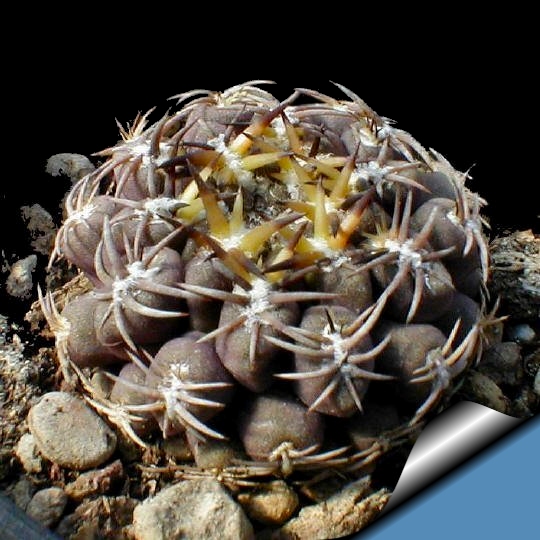
Plant dehydrated and retracted at the end
of winter rest shoving the first new spines.

Cultivation:
It is a summer-growing species of relatively
easy cultivation. It has a thick
taproot
and is
susceptible
to
over-watering if kept in a non
ventilated place. , sometimes it is
grafted to avoid
root
rot problems. Likes warmth (recommended minimum
winter temperature 5° C) But plant kept perfectly dry can easily
survive
to winter night temperatures below 0° C.
Sun Exposure: Suited for
sunny-brightly exposure; can
tolerate
light shade.
Good heat tolerance.
Cultural Practices: Suited for
airy exposures. Needs deep pot
and gritty mineral substrate with a very good
drainage to accommodate its
tap root.
Water regularly in summer,
keep dry in
winter.
Propagation: Usually propagated
from Seeds. (seldom produces offsets) or
graft. Seeds can be sown in the spring or summer. The seedlings
should not be disturbed until they are well rooted after which
they can be planted separately in small pots.

 |
|